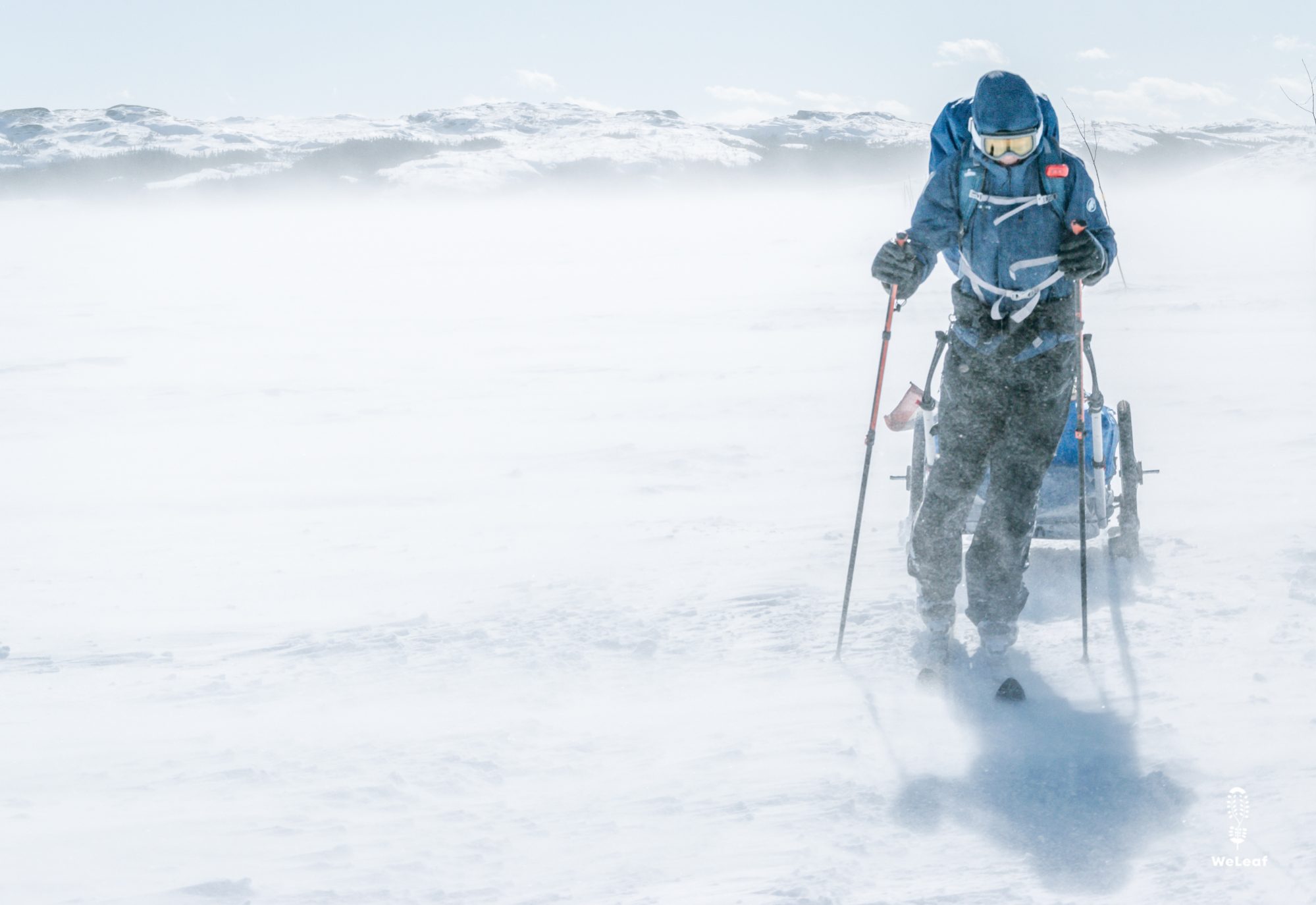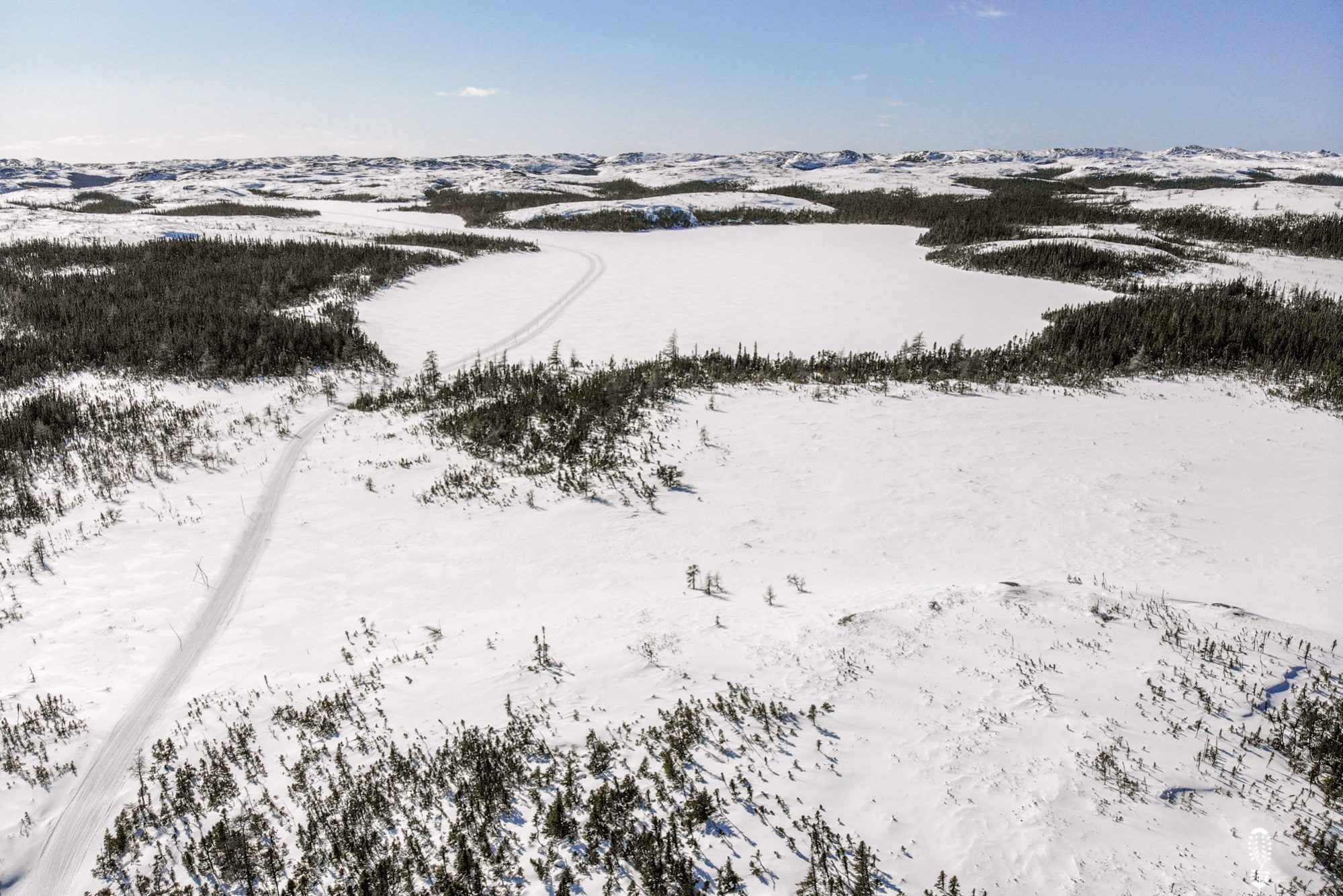
Love of wood

Homo Sapiens
May 14, 2020
From heroes to scapegoats in one day
May 30, 2020
Sunday March 8th - La Romaine
“Once on Route Blanche, you won’t see trees anymore” people warned us. We expect a barren polar landscape where we are exposed to cold wind and harsh conditions. But often the case is that people's knowledge of places further away is based on hearsay. They have never been there themselves and far away quickly becomes dangerous, wild and a challenge. The Route Blanche turns out not to be a monotonous polar landscape at all, but a varied area with a huge amount of lakes, hills and forests. For us this is a pleasant surprise because we don't like wind so much, and we like variety.
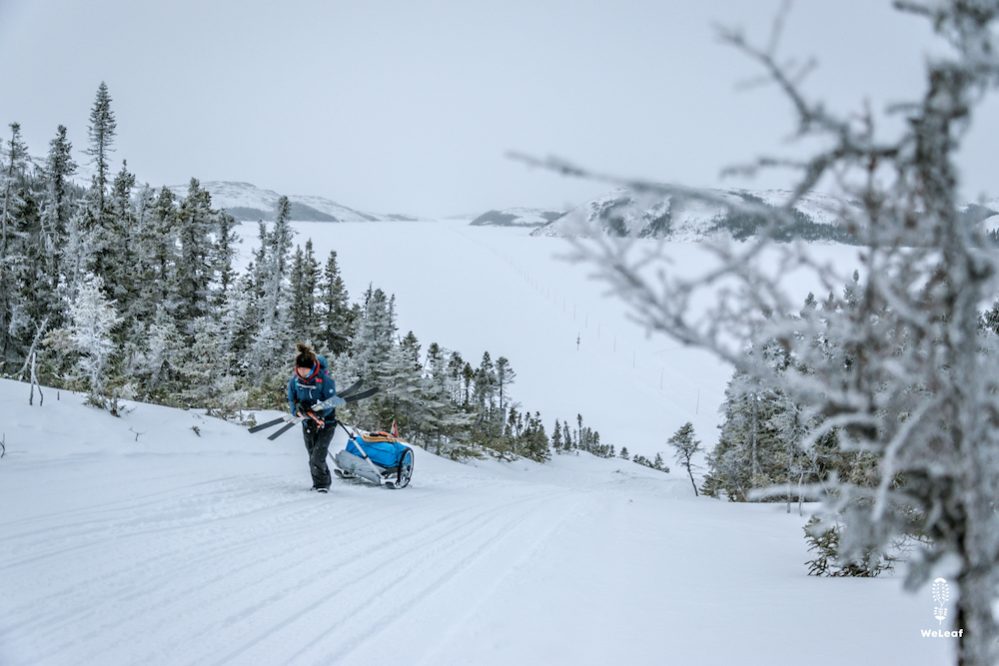
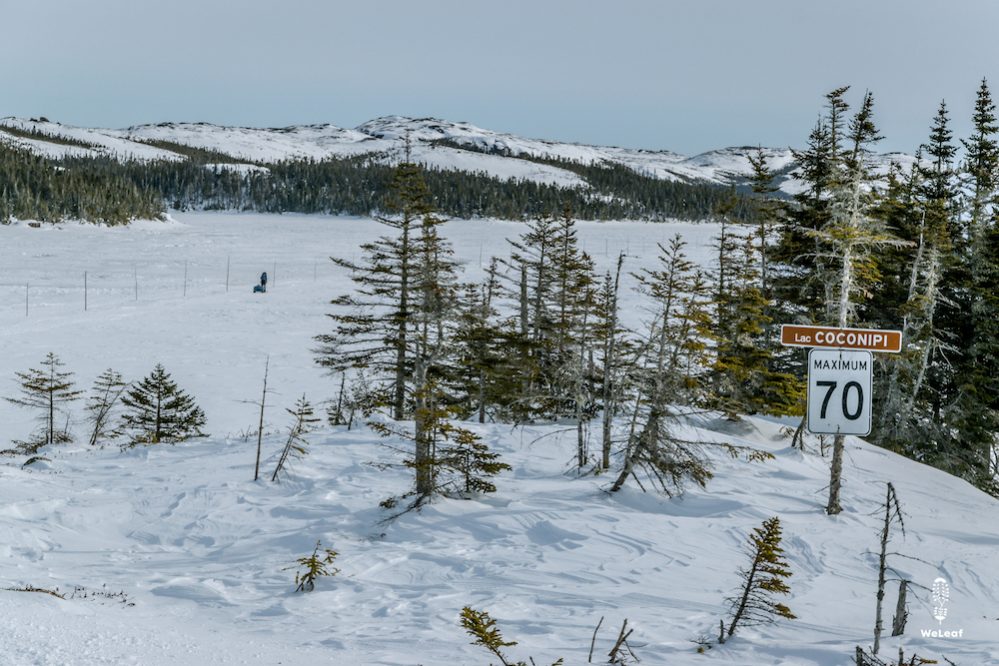
With two fresh trout in our sleigh we leave the house of our host Gilles on Sunday morning. We want to prepare the trouts in the wood stove of one of the emergency shelters in the evening. Zoë cleaned the trout, filled it with butter and herbs and wrapped them in aluminum foil. We won’t be able to do that on our own fuel stove and lighting a wood fire while camping in the snow is quite a job. There are only conifers that are impossible to burn when freshly cut. The few dead trees are usually rotten, and it is difficult to reach them in the deep snow. In addition, preparing the camping site is already a time-consuming activity, the wind is always blowing hard and being inside our sleeping bag is much more comfortable than around the campfire. Plenty of excuses to choose the convenience of an emergency shelter with a wood burning stove and dried wood at your doorstep. Near villages we regularly see snowmobiles driving back to the village with cut trees. "All those cut trees," we think. Nevertheless, we learn that wood is one of the most ecological energy sources.
The stored CO2 is released when trees are burned, but when trees die and rot, the same stored CO2 is also released. Net there is no extra pollution, it only happens a little faster than nature would and rotting wood is a living environment for many small animals. It is of course only healthy for nature and the environment if the natural growth of forest is at least equal to consumption. When we see all those trees behind the snowmobiles, we doubt that, but the proportion of the population that actually cuts trees is very small compared to the total amount of forest. Still, about 150 small trees are needed to survive a full winter when wood is the only source of heat for a home. To build a house at least 400 trees are needed. Winter is the only season where they can cut trees, because in the summer all the forest is inaccessible via land. In addition, there are too many mosquitoes and the cut wood must dry in the short summer.
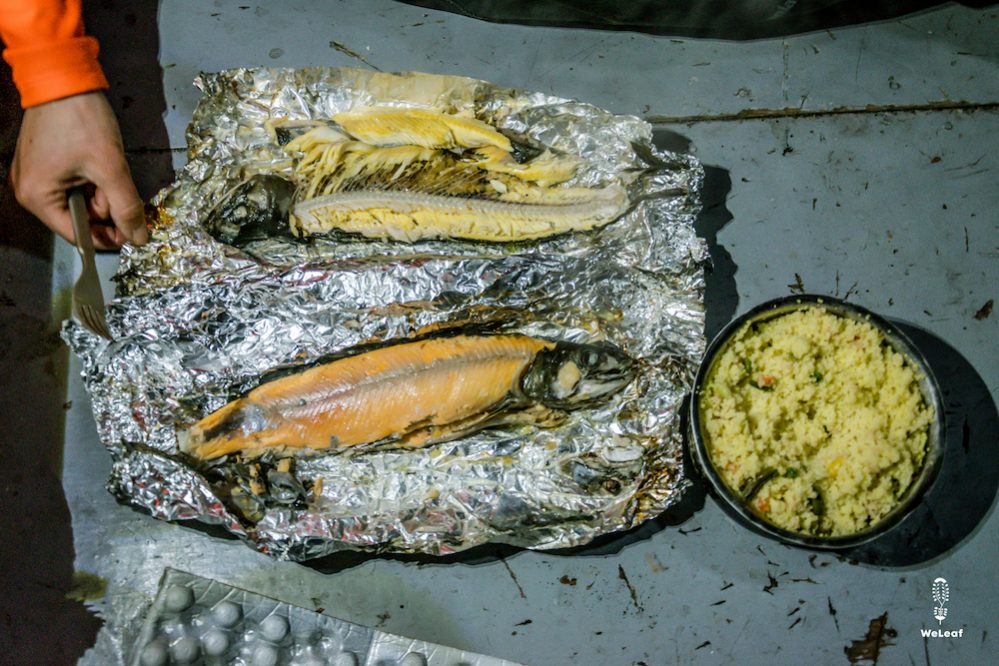
Lake trout and sea trout
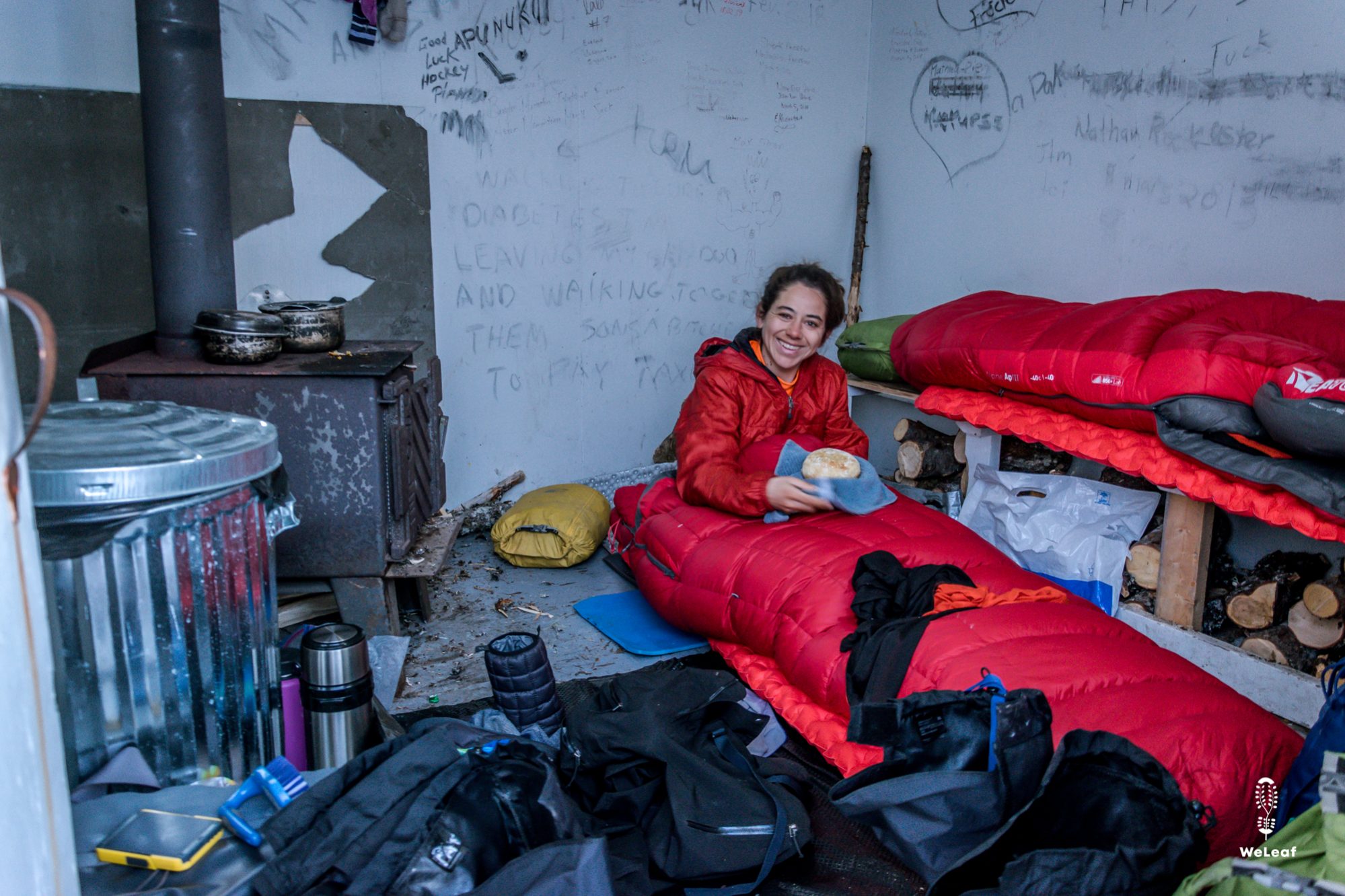
All villages along the north coast have electricity. Years ago, electricity was generated by large diesel generators in the village. These have been replaced almost everywhere by more sustainable energy from large hydropower plants. These are gigantic investments with a major impact on the landscape and nature. Some people on the north coast claim that the humidity has increased enormously since the large dams came. As a result, winters are softer and in the summer there are many more mosquitoes and black flies, small black biting flies. The one high-voltage line from the reservoir is also vulnerable in an area with so much wind and inaccessible places. If one pole is blown over, it can take days before the electricity supply is restored. Everyone on the north coast is prepared for this. The basement is full of food supplies, outside is a large pile of dried wood and often an emergency generator is located in the garage that runs on gas. The shops are supplied by ferry in the summer, by plane in the winter. The availability of fresh food depends on this delivery and this is often delayed.
"Power outages are normal, but we can survive a week without any problems" David tells us. As a buffer during peak consumption and power black-outs, the wood stoves are therefore an important asset on the north coast. We are also happy with the wood stove in the shelter. It is almost dark when we arrive at the shelter and it is freezing inside. Fortunately, the pine wood heats the stove and shelter quickly. Fast is relative since the outside temperature today was around -10 degrees, and it still cools down to -20 degrees at night. After an hour the temperature inside has risen above freezing point and an hour later we can sit inside without a jacket and hat. When the stove is really hot a few hours later, we even have to open the door to let in fresh air. We do not need that heat for ourselves, but to cook the fish and melt snow, the stove must remain hot. An hour before we go to sleep, which is three hours later than in the tent, we let the fire douse. If we wake up tomorrow morning, the temperature will drop to -10 degrees again.
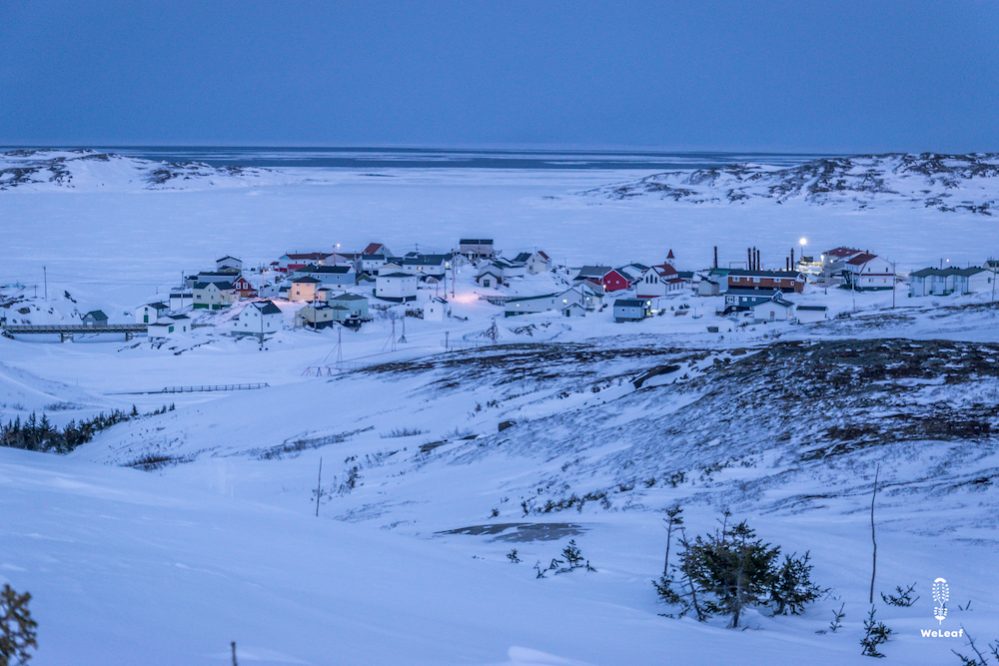
Harrington Harbour
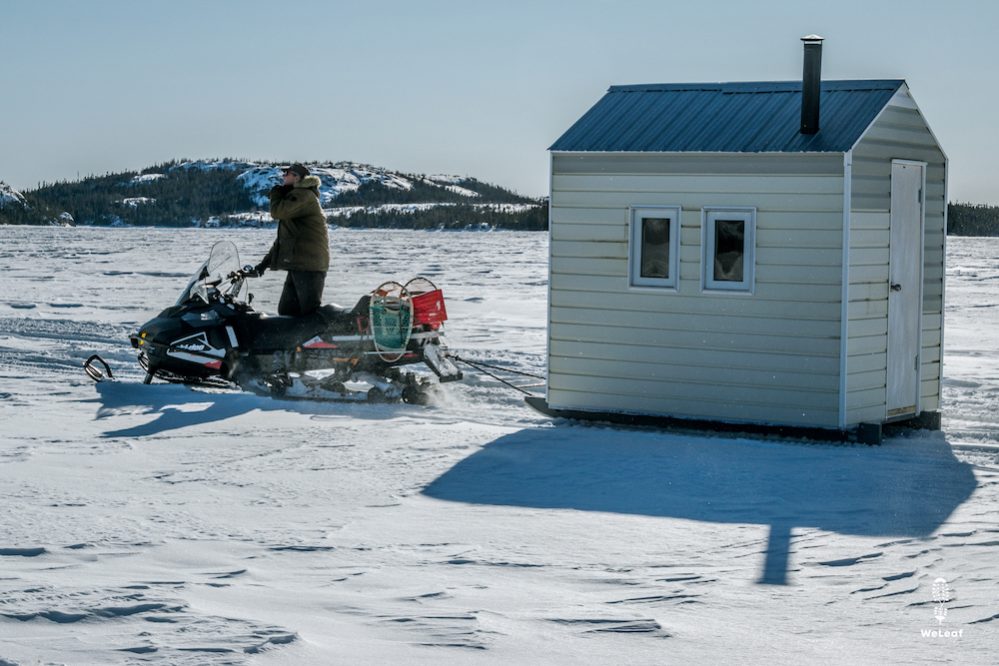
One of those villages on the trail is Harrington Harbor, an English-speaking village located on an island in the ocean. On Google Maps it seems impossible that we can get there, even in winter. Around the island there is only open sea with salt water. Yet all the water around the island freezes completely and it is accessible 'from land'. Harrington Harbor has an extra reputation thanks to the movie "the great seduction”, which is set in the village. In the film, one of the residents wants to bring a fish processing factory to the island to help the unemployment. One of the conditions is that a doctor works in the village, but they don't have one. They find a doctor from Montreal through a newspaper ad and try to seduce him into staying in Harrington Harbor. For us, Harrington Harbor is a detour of over 8 miles, half a day on skis, twice on the same route. At a quarter to five in the afternoon we arrive at the junction to the island. We are looking for a place to pitch the tent, but the first trees we see are still far away. A snowmobile stops next to us and asks where we are going. He lives in Harrington Harbor and tells us that we can leave the island via another route, which still makes it a detour, but not twice over the same route. A mental resistance is thus overcome. We hesitate for a few minutes and decide that it is worth a visit. We ski to the island over a thick layer of sea ice.
Salt water freezes and melts differently than fresh water. When melted, it turns into a mushy mixture they call "slush." Snowmobiles regularly get stuck in the slush because you often cannot see how deep the slush is on the surface. We are not bothered by it and can easily avoid the places. The idea that we ski on sea ice is not scary, but we still follow the marked route. The sun slowly descends to the horizon as small flakes of snow whirl down. It is magical and we feel polar explorers, a young childhood dream. It is dark when we arrive in the village and we don't have a place to sleep yet. We have a teacher's name, but no idea where she lives. Zoë knocks on a random door and asks for Anna. Unfortunately for us, Anna has not lived here for a few years because the school has been closed since a couple of years. "But we have a room available here, and dinner is ready. If you want? "Cheryl says this like a normal invitation. Cheryl lives in the family home with her brother Gregory. Both have a disability, but take good care of each other. Gregory is also autistic and soon he stands next to the television with the DVD of the Great Seduction in his hands. Together we watch the film, which Gregory pauses several times to show their house, or scenes in which they themselves have played as extras. The village is more modern than the film suggests and is connected to the electricity grid like the other villages. In addition, residents of Harrington Harbour can take the "taxi" helicopter to the mainland from their island for three dollars. Gregory laughs, “You've never been in a helicopter, I have never been on a train. I think that's so cool! ”.
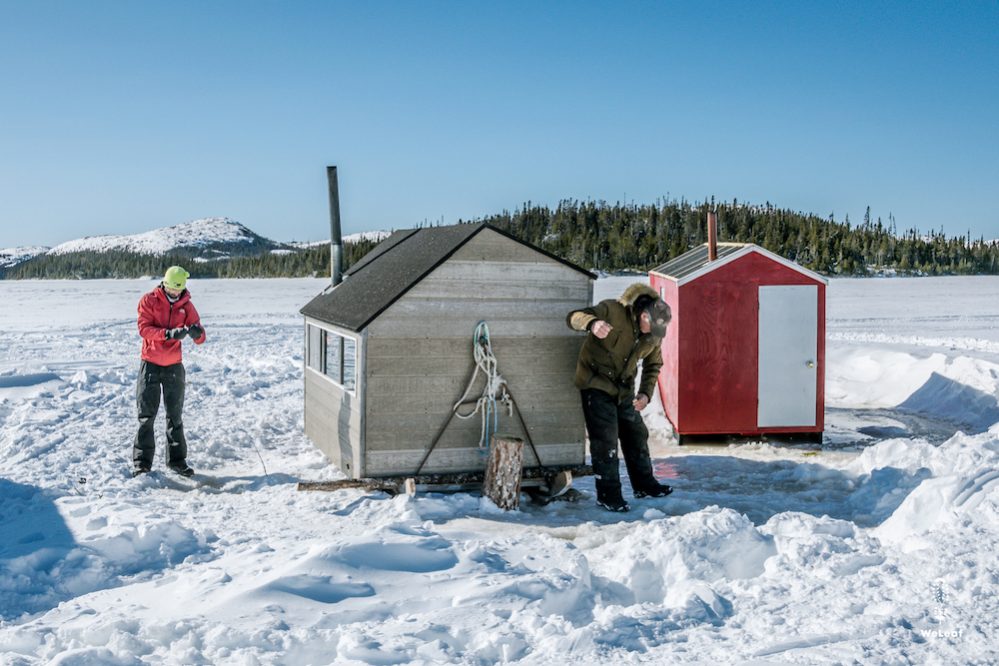
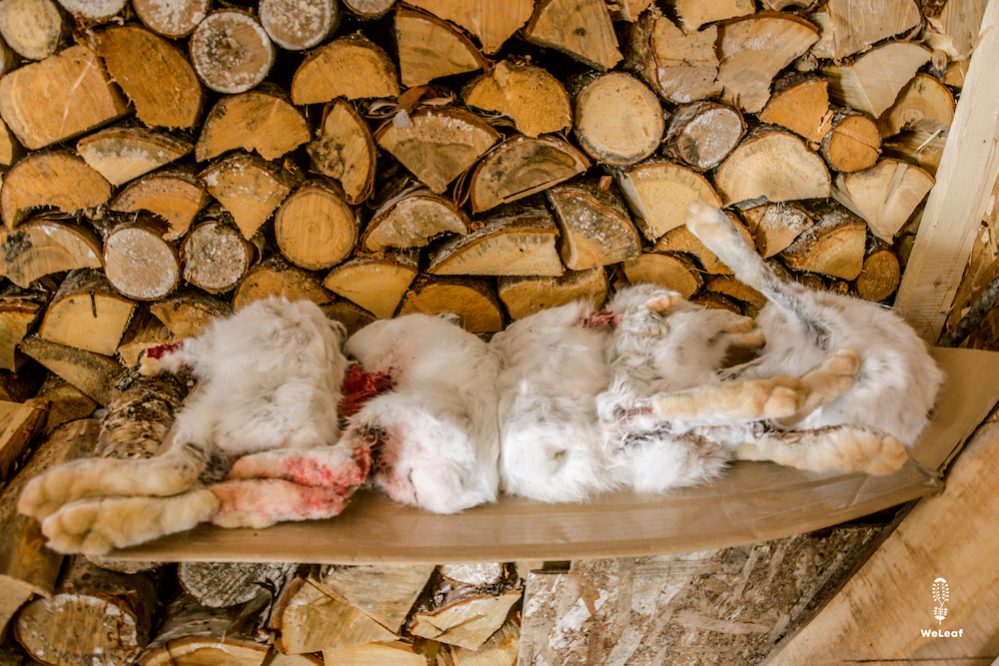
For some people, the arrival of this progress has been a setback. A few days later we see a few huts in the middle of a lake. They are small houses that they use for ice fishing. They drag the houses behind a snowmobile to where they want to fish. Inside is a small wood stove and several holes in the floor. With a large drill they make holes in the ice and they fish comfortably and warmly while drinking beer. When the weather is nice, they make the holes outside the house and only warm up the cold hands by the wood stove. We ski to the houses where a whole group of snowmobiles are parked around. If we had any doubts about the firmness and thickness of the ice, here's the proof. There are four houses, ten snowmobiles and several holes for fishing. William invites us into his fish cabin and shows us how to ice fish for smelts, a smaller fish that is so easy to fish that you can catch one every minute. Personally we find it a bit boring, and especially freezing cold because we still have our ski clothes on and are exposed to the wind. Inside the fishing hut it is better and there William tells us that he lives in a small, self-built house, completely self-sufficient and has no telephone connection. "Come and visit when you ski by tomorrow morning," he says. "How do we know which house it is? And how do we know if you are there ” Zoë asks. "I know what time you will ski by and I'll look will occasionally look out the window"
The next morning William is waiting for us in front of his house. His house is small and cozy, with seven other small houses around that each have a different function. A wood shed, a wood workshop, a garage, a warehouse, etc. He cut all the wood himself, processed it into planks and built the houses himself. For thirty years he worked as a lumberjack near Quebec. Heavy and grueling work, but he would do the same if he chose again. That's really love for wood. In the woodshed are thirteen trapped white hares. He caught them this winter and they are still frozen. "Next week I will defrost them, skin them and then put the meat in cans." "What do you do with the fur?” Zoë asks. "I don't do anything with it." Zoë would like to take the fur and have it made into a nice hat and William offers us two frozen hares, but wisely we don’t take them, because thawing out and skinning a hare? How on earth are you going to get that fur off?
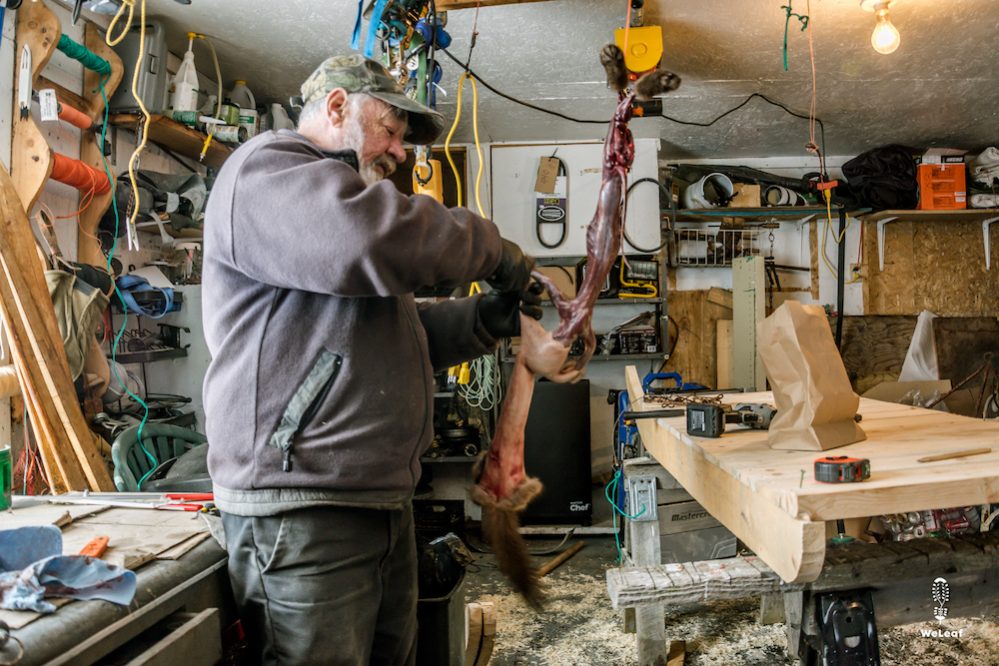
Skinning a marten
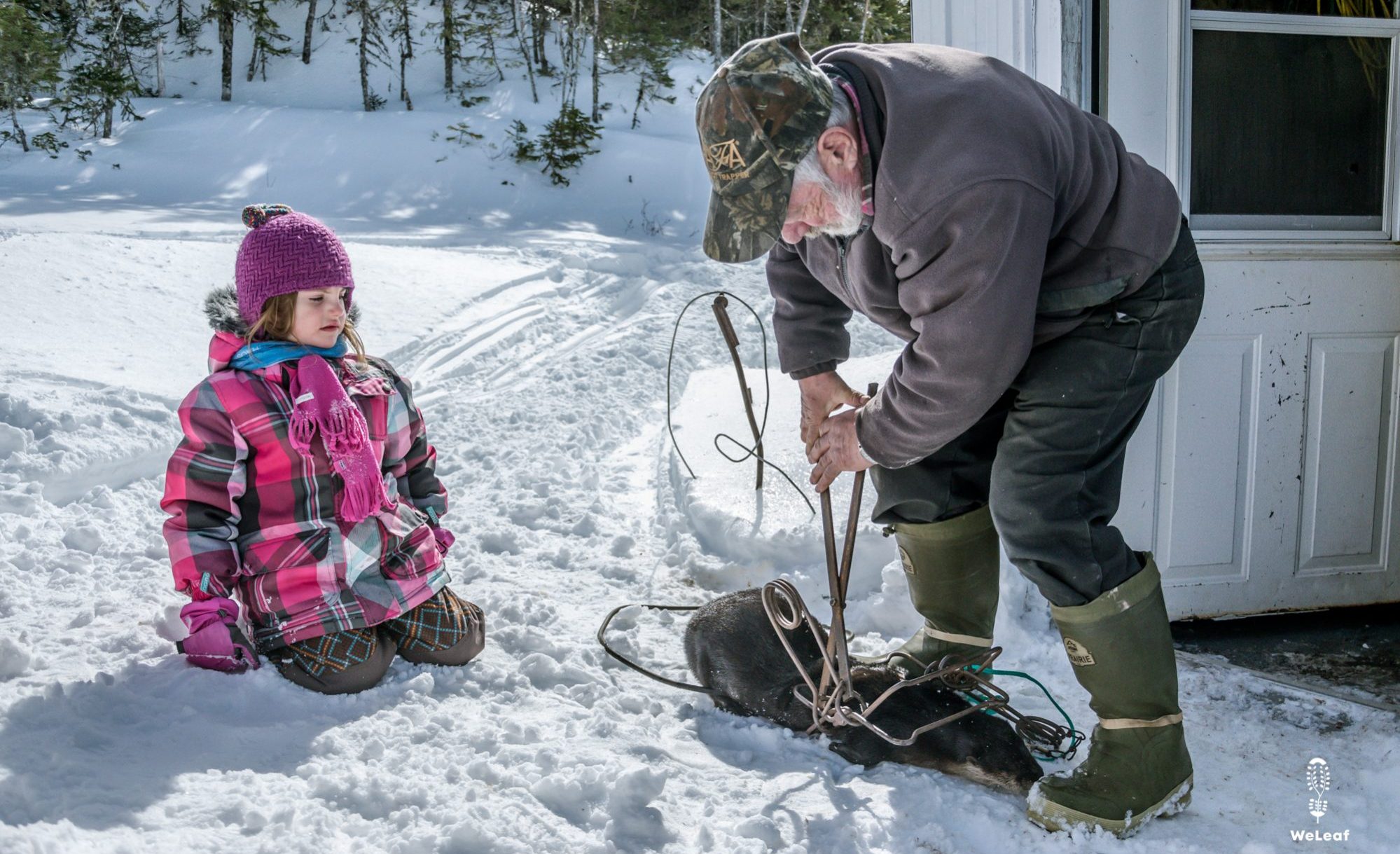
A trapped otter
That’s what we learn a few days later when we are in Felix’ garage. A dead otter is laying in front of his door, caught in a large clamp. Tom's daughter pets the otter as if it were her stuffed animal, she doesn't find anything dirty or shocking about it, such a dead animal. Felix found the otter in one of his traps this morning. It is still a little warm, but gradually freezes. Inside he is skinning a marten. When we see him busy, it seems a piece of cake. A short cut around the legs and then he pulls the whole skin off like a sock. He stretches the skin on a wooden board and has to dry for a few days. He'll get $ 50 for it. The meat disappears in the dustbin. The trash bin is full of dead animals and there is also a beaver's tail sticking out. They only eat hares themselves, but the other animals are too much work or they don't like them. Not even the dog gets it, which in our opinion, is pure waste.
While in Europe the corona virus puts one country after another in lockdown, life here goes on as usual. Nobody is concerned because the north coast is far away from this danger. Moreover, there are no rules here and everyone is self-sufficient if necessary. Why should the people, and we, worry?
